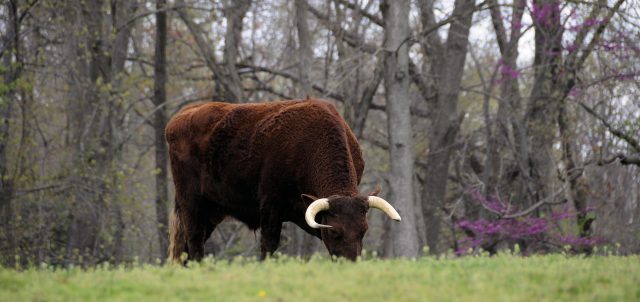Type the name of the breed you're looking for below
[wpdreams_ajaxsearchlite] Don't see the breed your're looking for? Click here and let us know!
American Milking Devon
| Place of Origin | United States of America |
| Origin | In 1623, a small shipment of North Devon cattle from north Devonshire arrived in the Plymouth Colony. Though cattle had been imported to the continent by the Spanish much earlier (descendants of which are the Texas Longhorn, Pineywoods and Florida Cracker breeds), this was the first arrival of British stock to the Americas. The Milking Devon spread along the east coast as far south as Florida, and its multi-purpose ability to provide labor, meat, and milk was valued by farmers. But beginning in the 19th century, the Shorthorn breed began to be preferred by farmers for dual-purpose cattle, and by 1900 the Milking Devon was rarely found outside New England. By the middle of the 20th century, numbers had dwindled even more significantly, and the market for triple purpose cattle had virtually disappeared. The breed reached its low point in the 1970s, with fewer than 100 head. Today, Milking Devons are still one of the most endangered breeds of cattle in the world. But with the aid of organizations such as the American Livestock Breeds Conservancy and Slow Food USA's Ark of Taste, numbers have begun to rebound slightly. At any given time, 600 living animals are registered as purebred with the breed society. |
| Purpose | The American Milking Devon is one of only a few truly triple purpose cattle breeds left in the West, being valued for meat, milk and draft. |
| Appearance | The coat is a dark, glossy red colour. |
| Horns | The horns are white, ideally with black tips and of medium length. |
| Cows Average Weight | 499 kg (1,100 lbs) |
| Bulls Average Weight | 726 kg (1,600 lbs) |
| Other Considerations | Milking Devons are also physically hardy, and able to survive well on forage. Though Milking Devons are not heavily selected for dairy production in the 21st century, the butterfat content of their milk is comparable to that of the Jersey (though the volume of milk produced is not). |



